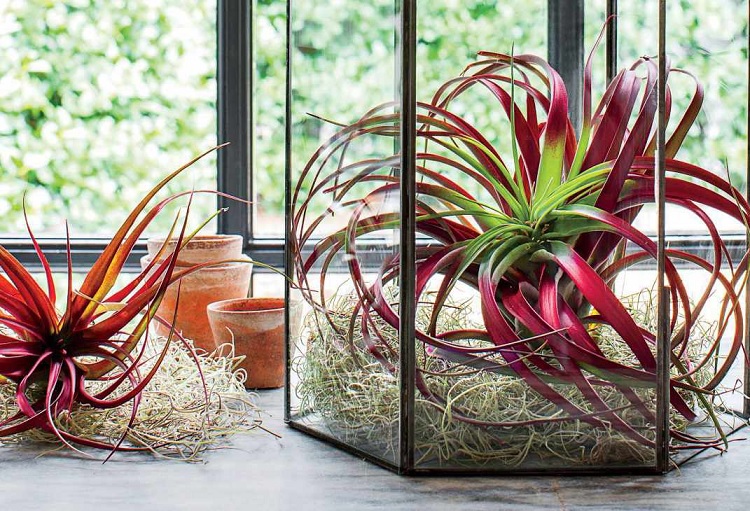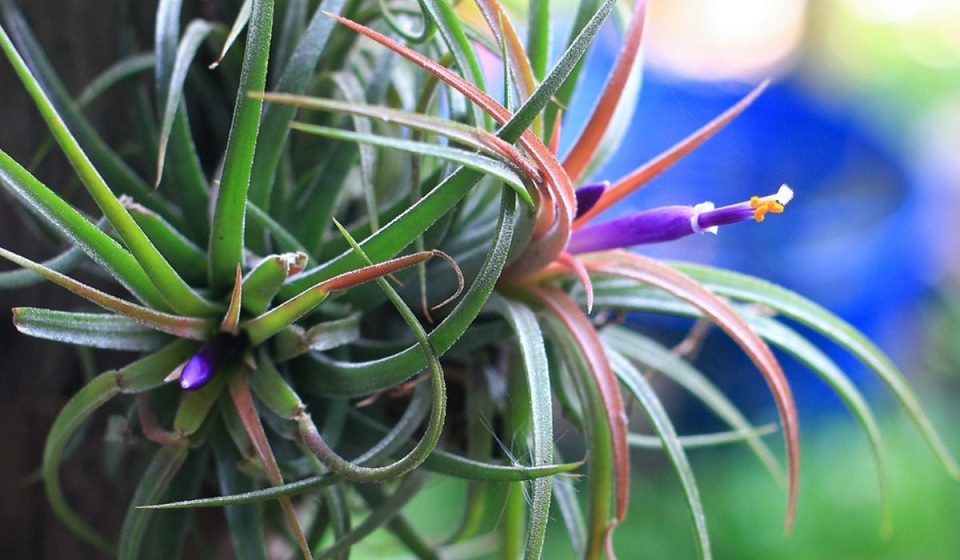Air plants are becoming more and more popular in homes and offices. These little plants are special because they don’t grow in soil. They can grow on many surfaces and only need light, air, and a little water to survive. If you’re looking for a plant that’s easy to care for and looks great, air plants might be just what you need.
In this article, we’ll cover what air plants are, how to take care of them, where to place them, and some fun facts you might not know. Let’s dive in!
Table of Contents
What Are Air Plants?
A Simple Introduction
Air plants are also known as Tillandsia. They are part of the bromeliad family and grow naturally in forests, mountains, and deserts in Central and South America. Unlike most plants, air plants don’t grow in soil. Instead, they take in nutrients and moisture from the air through their leaves.
What Makes Them Special?
Air plants are epiphytes, which means they grow on other plants, rocks, or trees but don’t harm them. This helps them survive in tough places where other plants can’t grow. Because they don’t need soil, you can place them in creative ways—like in glass globes, on driftwood, or hanging from string.
Types of Air Plants
There are over 600 types of air plants! Some are small and curly, while others have straight leaves or even colorful flowers. Here are a few popular ones:
Tillandsia Ionantha
- Small and easy to care for
- Often turns red or pink before it blooms
- Good for beginners
Tillandsia Xerographica
- One of the largest air plants
- Has wide, curly leaves
- Needs bright light and less water
Tillandsia Bulbosa
- Has a fun, wavy shape
- Looks like seaweed
- Prefers a humid environment
How to Care for Air Plants
Air plants are low maintenance, but they do need proper care to stay healthy. Let’s look at the main things they need.
Light
Air plants love bright, indirect sunlight. A spot near a window that gets filtered light is perfect. Avoid placing them in direct sun for too long, as it can burn their leaves.
If you don’t have much natural light, artificial grow lights also work well.
Water
Even though they don’t grow in soil, air plants still need water. Here’s how to water them:
- Soaking: About once a week, soak your air plant in a bowl of water for 20–30 minutes.
- Drying: Shake off any extra water and let the plant dry upside down on a towel. This prevents rot.
- Misting (optional): In dry homes, you can also mist your plant with water 1–2 times a week.
Important: Use filtered water, rainwater, or tap water that has sat out overnight. Avoid distilled water or water with a lot of chemicals.
Air Circulation
Air plants need good airflow to dry properly and stay healthy. After watering, make sure they are in a place where air can move freely around them.
Temperature
They prefer temperatures between 50°F and 90°F (10°C to 32°C). Keep them away from air conditioners or heaters that blow directly on them.
How to Display Air Plants
One of the best things about air plants is how you can display them. You don’t need pots or soil, so you can be very creative.
Ideas for Displaying Air Plants
- Glass Terrariums: Great for desks, shelves, or hanging near a window.
- Wood Pieces: Place them on driftwood or cork bark for a natural look.
- Hanging Holders: Use string, wire, or macramé to hang them in the air.
- Shells and Stones: Place small air plants in seashells or on colorful stones.
- Wall Frames: Glue or attach air plants to a piece of wood or wire mesh to create living wall art.
Make sure the plants are easy to remove when you water them.
How Air Plants Reproduce

Air plants have a fun way of making more plants!
Blooming and Pups
- An air plant will bloom once in its life, producing a flower that can last from a few days to several weeks.
- After blooming, the plant will start to grow baby plants, called pups, at its base.
- You can leave the pups to grow into a clump, or separate them when they are about 1/3 the size of the parent plant.
This is how you can grow your air plant collection for free!
Common Problems and How to Fix Them
Even though air plants are easy to care for, problems can still happen. Here’s how to handle the most common issues.
Brown Tips
Cause: Not enough water or too much sunlight
Fix: Soak the plant longer and move it out of direct sun
Rotting Base
Cause: The plant stayed wet too long after watering
Fix: Let plants dry upside down completely before placing them back in their holders
Curled or Wrinkled Leaves
Cause: Dehydration
Fix: Give your plant a deep soak for 1 hour, then return to weekly watering
Leaves Falling Off
Cause: Sudden temperature changes or too much water
Fix: Keep the plant in a steady, warm place and don’t overwater
Fun Facts About Air Plants
- Air plants don’t have roots for absorbing water. Their roots are only used to attach themselves to surfaces.
- Some air plants glow in the dark under UV light!
- They were used in ancient times by Indigenous cultures for decoration and medicine.
- Air plants clean the air by removing dust and toxins—making your home healthier.
Why You Should Get an Air Plant
Still wondering if air plants are right for you? Here are some great reasons to give them a try.
They’re Easy
No soil, no mess, and no complex routines. Just light, water, and air.
They’re Beautiful
Air plants come in many shapes, sizes, and colors. They add a natural and modern look to any room.
They’re Great for Small Spaces
Whether you live in a small apartment or a large house, air plants can fit anywhere.
They’re Kid and Pet Friendly
Since they don’t need soil or chemicals, they are safe for kids and pets—just keep them out of reach if your pet likes to chew on plants!
Conclusion
Air plants are a fantastic choice for anyone who wants a unique, easy-care plant. With just a little attention and creativity, you can keep them happy and healthy while decorating your home in a stylish and fun way.
They don’t ask for much, but they give a lot in return—fresh air, beauty, and even new baby plants! Whether you’re a new plant parent or an expert, air plants are sure to bring joy to your space.










